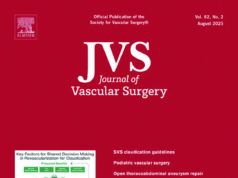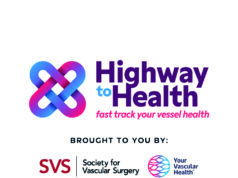
On Jan. 22, 2024, the American Heart Association (AHA) and the American College of Cardiology (ACC), together with three other major cardiology societies, submitted a proposal for the formation of the American Board of Cardiovascular Medicine. Essentially, the 157-page document requests the transition of cardiology and its sub-specialties from oversight within the American Board of Internal Medicine (ABIM) to an independent entity within the American Board of Medical Specialties (ABMS). The success or failure of the proposal will likely have little effect on the day-to-day practice of cardiology in our country; it does, however, give an excellent insight into the current thinking of the leadership of their major societies and their vision for the future. Unsurprisingly, I do not agree with some aspects of the document, particularly as it relates to cardiologists practicing in the peripheral vascular space.
The Accreditation Council for Graduate Medical Education (ACGME) oversees the accreditation of residency and fellowship programs in the U.S. Its Program Requirements for Graduate Medical Education (7/1/24) define interventional cardiology as “the practice of procedural techniques that improve coronary circulation, alleviate valvular stenosis and regurgitation, and treat other structural heart disease.” No mention of peripheral vascular disease, carotid stenosis or aortic aneurysms. The ACGME understood the assignment. Fittingly, the requirements for interventional cardiology fellowships include detailed descriptions of a variety of ischemic, structural and valvular disorders in which fellows must acquire competence. A minimum of 250 coronary interventions are also mandatory. Faculty members must be available with expertise in hematology, pharmacology, radiation safety and congenital heart disease in adults. There are no guidelines or requirements for training and competence in peripheral vascular disease.
The ABMS, through its 24 member boards, provides certification for a wide variety of medical specialties. The mission of ABMS is to “serve the public and the medical profession by improving the quality of health care through setting professional standards for lifelong certification.” The ABMS defines interventional cardiology as “an area of medicine within the subspecialty of cardiology, which uses specialized imaging and other diagnostic techniques to evaluate blood flow and pressure in the coronary arteries and chambers of the heart, and uses technical procedures and medications to treat abnormalities that impair the function of the cardiovascular system.” So maybe there is the loophole. The “vascular” in “cardiovascular.” Thankfully, though, the board provides blueprints for its exams so we can see the disease states that a certified interventional cardiologist is expected to treat.
In the content outline for the initial certification exam, the broadly defined “evaluation and case selection in noncardiac disease” constitutes just 5% of the total. While this blueprint details a wide range of cardiac pathologies common and rare (Takotsubo syndrome?), there is no mention of claudication, rest pain or aneurysms. Similarly, the open book 10-year Maintenance of Certification exam dedicates just 10% to catheter-based management of noncoronary disease, with the majority concerning structural and valvular heart disease. Cilostazol, the only drug thus far proven to demonstrate consistent benefits in clinical trials in patients with claudication, is specifically tagged with a “low-frequency” designation.
Look, I have no interest in being the main character on #cardiotwitter again. (By the way, why is everyone there named something like @CLTImuscularwarrior? Where are my @DVTdoughboys and @claudicationcouchpotatoes?) Cardiologists don’t have to take my word for what constitutes adequate training in peripheral vascular disease. Their own leading societies, the ACC, AHA and Society for Cardiovascular Angiography and Interventions (SCAI), published an advanced training statement in 2023. They lay out the problem here: “One year of advanced fellowship training focused predominantly on coronary interventions will likely not provide adequate clinical exposure and procedural experience to achieve competency in all other areas of interventional cardiology. Additional fellowship or post-fellowship training will be needed to gain the experience necessary to become a competent, independent expert in most aspects of peripheral vascular or structural heart interventions.”
The statement then describes what they refer to as Level III training in peripheral vascular interventions, most of which they admit must be acquired outside of the traditional interventional cardiology fellowship. The report also lists a variety of vascular conditions, suggesting that physicians can pick and choose to learn them individually, like ordering apps in a Cheesecake Factory. Level III trainees are not expected to be expert in the management of less common vascular conditions and should utilize “information technology or other available methodologies.” Unfortunately, there is no Level IV in this training paradigm so I guess Google it?
What about venous disorders? The document states, “management of venous occlusive disease, compression and reflux should be part of the curriculum.” Spoiler—it is not. In listing the milestones for peripheral vascular interventions, essentially everything outside of a nonselective aortogram is considered an additional competency that extends beyond the core expectations. Taken as a whole, this consensus statement is a step-by-step outline of why it is impossible to become competent in the treatment of peripheral vascular disease within the context of interventional cardiology training. Virtually none of the requirements are covered by the existing residency requirements or testing blueprints. For endovascular aneurysm repair (EVAR), the authors simply note “additional training will likely be required through non-ACGME-accredited advanced fellowships or post-fellowship training through courses, proctoring, or direct mentorship.” A statement that should stoke fear in the hearts of anyone without a significant financial stake in an endograft company. Folks, it is OK just to say hey maybe doctors should not do things they are not trained to do!
It is not really clear to me how cardiologists began working in the peripheral space. The interventional aspect of the field is fairly young. Cardiology joined the ABIM in 1941, but the first coronary angioplasty was performed three decades later. The volume of coronary interventions declined in the U.S. over the first 10 years of the 2000s. Regrettably, this happened at a time when interventional cardiology saw an explosion in their workforce. Between 2008 and 2013, there was an 85% increase in active interventional cardiologists. No other medical or surgical specialty saw an increase of more than 50% during this time. Perhaps this strain between a burgeoning workforce and dwindling case volume pushed more cardiologists to the periphery. This famously caught the attention of the New York Times, which published a 2015 story on cardiologists performing unnecessary extremity interventions.
I trained in the late 1990s and early 2000s and cannot recall many cardiologists interested in peripheral vascular disease. Most treated circulatory disorders with the intention of preventing heart attack and stroke. Any peripheral vascular benefits were ancillary or unmentioned. I will admit that the peripheral vascular space likely became a free-for-all because most vascular surgeons were slow to adopt interventional techniques. To make up for this, however, we have undergone a revolution in training and assessment. Our case requirements, training duration, residency paradigms and exam blueprints have all been completely rewritten to ensure that vascular surgeons achieved documented proficiency in all aspects of peripheral interventions. Vascular surgery is now the sole training pathway to gain competence in the medical, surgical and endovascular treatment of vascular disease.
The ABMS definition states that vascular surgery “encompasses the diagnosis and comprehensive, longitudinal management of disorders of the arterial, venous and lymphatic systems, exclusive of the intracranial and coronary arteries.” The ACGME affirms “vascular surgery is the surgical specialty involving diseases of the arterial, venous and lymphatic circulatory systems, exclusive of those circulatory vessels intrinsic to the heart and intracranial vessels. Specialists in this discipline demonstrate the knowledge, skills and understanding of the medical science relative to the vascular system, as well as mature technical skills and surgical judgment.” Our country’s leading training and certification authorities have delivered a clear and consistent message. So why is the public confused?
One would hope that in the face of this lack of clarity a new American Board of Cardiovascular Medicine would offer clear and specific guidelines for cardiologists who wish to pursue peripheral interventions or nebulous interests such as vascular medicine. Well reader, one would be disappointed. While the new board proposal does make an excellent case that cardiology is a growing and increasingly complex specialty, a great deal of the aims confusingly focus on changing the continuous certification process. Much of it reads like my 12-year-old hired a consulting firm to get out of studying for a science exam. “Hey Dad, it’s time to change the conversation around education and home study. We here at the House of LukeTM are prepared to embrace a new paradigm, one that will credit me for my wealth of real-world experiences and not these meaningless high stakes exams. It is time for continuous learning, not continuous testing.”
Here are some highlights from the proposal: Patients and the public expect their physicians to have the ability to deliver high-quality care and should require that there are standards in place to assure continuous competence (agree). Cardiovascular medicine has a clearly defined scope of practice and standards of competence which have been set by rigorous scientific processes and experts in the specialty (agree to disagree). The rapid acceleration of innovation and advances in cardiovascular medicine since 1941 has transformed the field of cardiovascular medicine and increasingly requires unique skills and training that are markedly different from those in internal medicine to practice effectively (they go on to list a bunch of advances, none of which are related to peripheral vascular disease). Essentially, it seems the proposed board would allow physicians to identify their own knowledge gaps and fulfill continuous certification requirements through CMEs provided by the (coincidentally?) sponsoring societies.
In defining professional competence, the 2020 AHA/ACC Consensus Conference on Professionalism and Ethics states: “To maintain competence, physicians must be committed to lifelong learning and be responsible for maintaining the medical knowledge and clinical and team skills necessary for the provision of quality care. More broadly, the profession must strive to see that all its members are competent and must ensure that appropriate mechanisms are available for physicians to accomplish this goal.” The proposal for a new American Board of Cardiovascular Medicine fails to address this need for cardiologists performing peripheral interventions. Their plan for continuous certification will not only encourage cardiologists to perform outside of their expertise, it will also make it more likely they will not recognize their own deficiencies.
Psychology calls this the Dunning-Kruger effect. The skills that give us competence in a certain domain are the same skills needed to evaluate competence in that same domain. Competence must be achieved from the competent. Individuals who do not achieve competence dramatically overestimate their ability and are unable to use information about the choices and performances of others to form more accurate impressions of their own ability. Physicians who do not obtain the appropriate skills and training suffer a dual burden. They make poor choices and false conclusions, and their lack of competence robs them of the ability to recognize this. They don’t know what they don’t know. Physicians with properly acquired proficiencies and knowledge are more equipped to recognize and learn from their mistakes. They know what they don’t know and, therefore, are able to continue to gain expertise through lifelong learning.
It is a matter of patient safety that we end the public confusion caused by terms like “cardiovascular” and “vascular medicine.” Physicians need to perform within their expertise. The backbone of U.S. training is graduated responsibility within an ACGME-accredited residency followed by ABMS board assessment and lifelong learning. Equivalent experience should only be applied in rare and exceptional cases. It is time to dispel the illusion that the 10 million Americans with peripheral vascular disease should be cared for by physicians who purport to have gained competence through pathways that are unaccredited, unregulated and untested.
Cardiology is an extremely complex field with multiple subspecialties. It likely deserves its own house. Just don’t hide peripheral vascular disease in the basement.
Malachi Sheahan III, MD, is a member of the Vascular Surgery Board (VSB) of the American Board of Surgery. His opinions do not reflect VSB policy or positions.












